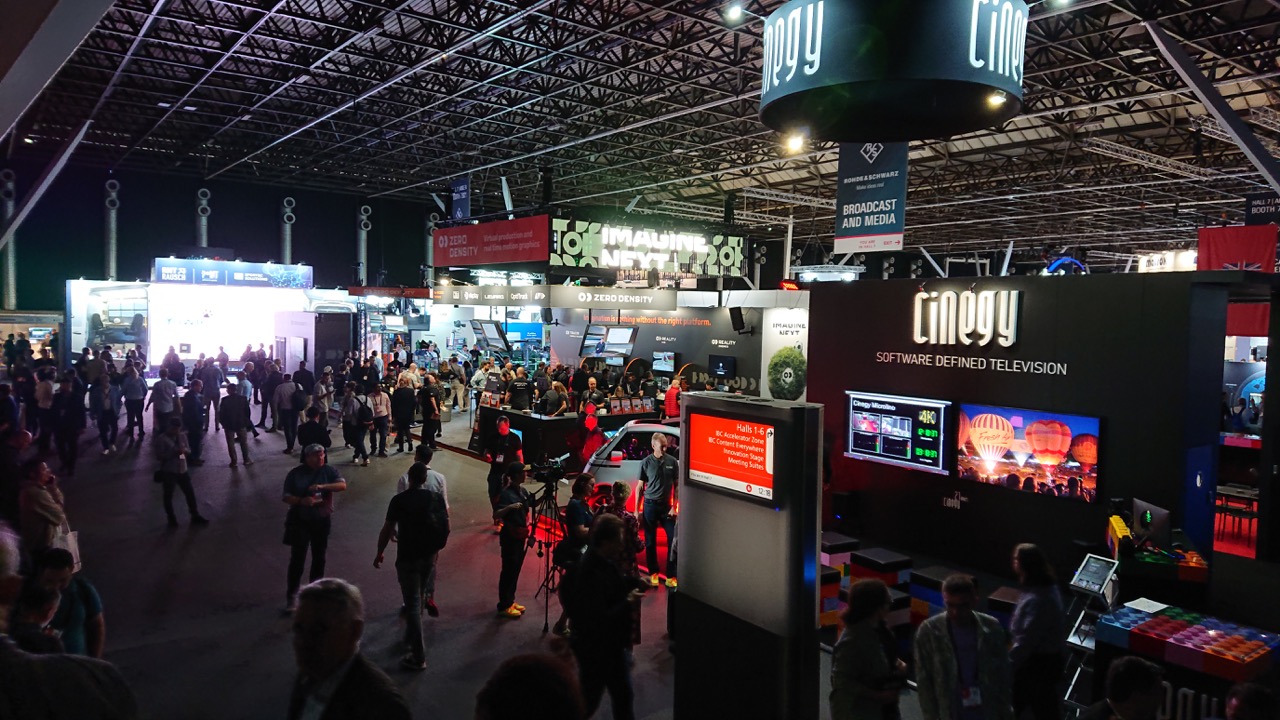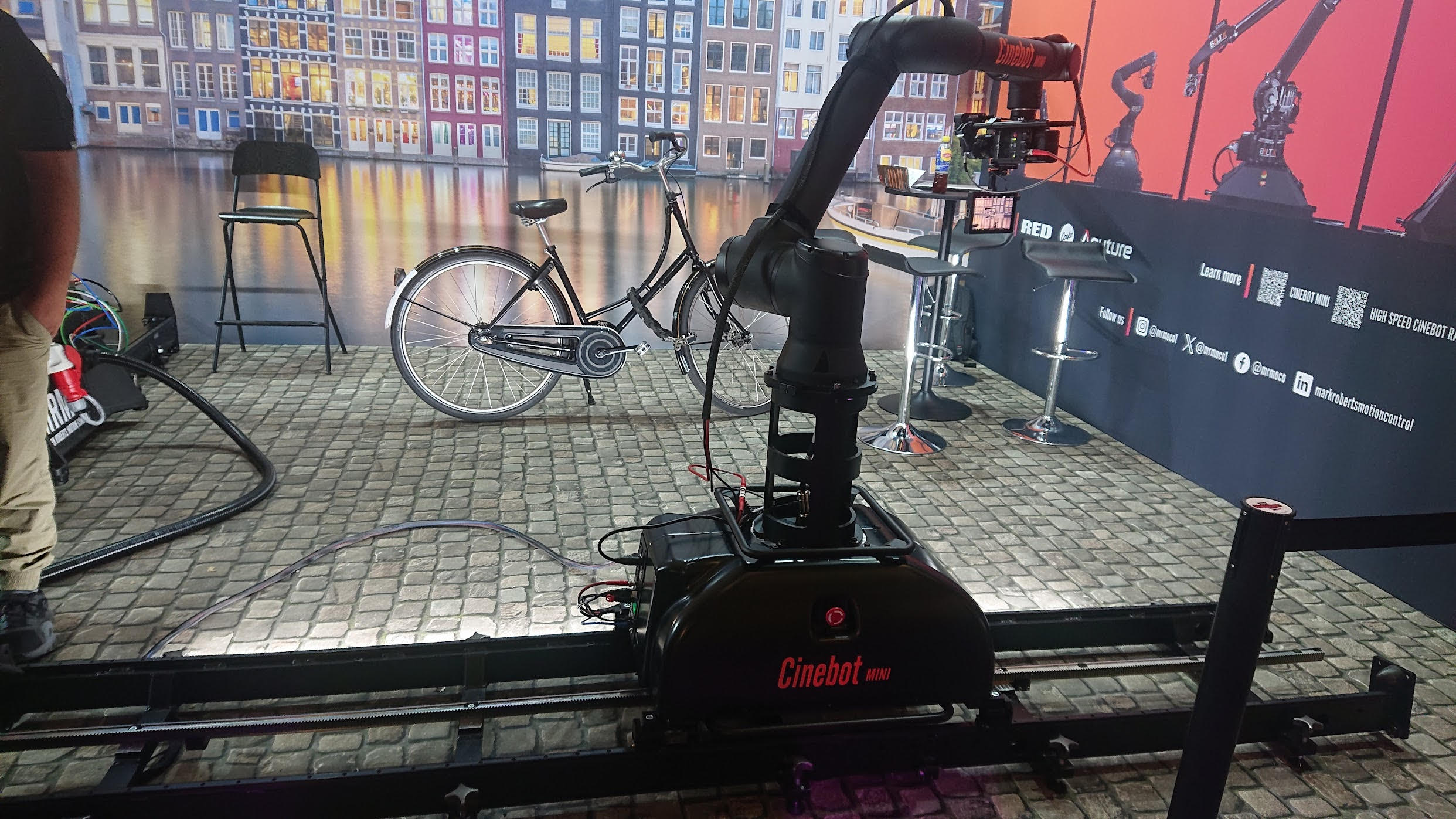
There’s a strange imperative, at exhibitions like IBC, to find new inventions that make previously expensive and difficult things available to more people. It’s understandable enough, although, as we’ve already seen, several exhibitors at IBC 2023 are leaning away from stacking things high and selling them cheap, often toward higher-capability, bigger-ticket products for clients with deeper pockets. Sometimes, though, there’s almost nowhere to go: Cooke could hardly become even more exclusive. Similarly, even though the motion control experts at MRMC have already executed a swift sidestep to take in broadcast as well as single-camera clients, it’s hard to imagine how the company could put a higher shine on a product line that’s been famously gold-plated for decades.
So, are there also companies reaching for lower-end results? Well, not really. Perhaps only not so much as to give away that juicy high-level market.
Cooke’s SP3 lenses were announced a week or so before the show, and turned up in various places, including on the front of more than one full-frame camera. They’re hardly cheap, of course; at over $4000 a lens, it’s still far from an impulse buy, but they’re among the most practical sets of lenses that Cooke has ever designed from the perspective of the owner-operator.
MRMC is a long-time purveyor of the kind of device that will be among the first to become part of a robot army ‘o doom should a Terminator-style artificial intelligence one day decide to wipe out humanity. On a more serious note, the broadcast tools make an enormous amount of sense; MRMC has been making enormous, servoactuated camera cranes for decades, but for most of the company’s history, it’s been a market limited almost entirely to the likes of commercials and the very highest-end features and TV dramas.
In a world beset by high-gloss drama, broadcasters events are increasingly willing to spend what it takes to buff up a live broadcast, to follow a sportsperson or performer in an interesting way. MRMC’s two IBC releases are both at the more compact end of the company’s potential range: the diminutive, mirrorless-oriented SR-1 pan and tilt (and sometimes roll) head, and the cinebot mini. The former is very much part of the broadcast-oriented range, although, designed to take a small mirrorless camera, it’s also likely to find other uses in other areas of content creation, as is clearly the intent.
The Cinebot Mini, meanwhile, belongs in much the same frame as MRMC’s existing effects-related robots, things like the Bolt and Cinebot (though both have been and can be used for broadcast work). The Bolt itself is referred to as “small” on the MRMC site, and it’s certainly smaller than classics like the Milo, although the Mini really is a diminutive thing that could be operated from nothing much bigger than a transit van. Like several of the company’s existing products, it’s a repurposed industrial robot arm, albeit much tweaked and with entirely new controls and software. It’s hard to object to the approach when so much of the hard design work has been done.

Neither of them is likely to be priced at a level where people buy things for fun, though they’re both at the physically diminutive end of the market.
Somewhat analogous things are going on over at Flanders Scientific, where recent developments motivated by the endless R&D available to consumer displays might have moved the needle on reference monitors. Samsung’s famous entry into the OLED display panel market – after some time spent pushing its LCD-based QLED branding – seems to have gone well. The company is now on what we might call the second generation of its panel technology, which uses blue OLED emitters to drive quantum dot fluorescent media, much like a white LED is based on a blue LED driving a yellow phosphors. The result, in Flanders’ XMP550, is a display with the black performance of an OLED but achieving 2,000 nits brightness in a unit that should not suffer the same lifetime issues as some others have.
We’d be forgiven for thinking that OLED, like plasma display panels, might end up being a technology that never quite made it. It’s a tricky, thoroughbred technology. Sony more or less walked away from being an OLED panel manufacturer after struggling to get workable lifetime and stability out of its highest-end grading reference displays. The principal benefit of Samsung’s design is that others have included a white-emitting pixel so they can drive peak whites higher; naturally, this results in a loss of colour saturation at high brightness which is not well-received by fans of accuracy.
There’s qualified speculation about even brighter displays once some of the physical properties of the quantum dots have been worked on. They’re not very heatproof, among other things, and the company has reportedly worked hard to ensure long life and accuracy in the XMP550 design. The 55-inch display pushes $20,000, and yes, you’d be right in thinking that’s a lot of money for a monitor based on a panel you can probably get in some consumer TVs. The manner in which it’s driven will differ, of course. $20,000 is, however, a third less than a lot of other options for a much bigger display that’s likely to make clients happy in the grading suite,
Let’s not call these things low-end; between Cooke, Flanders and MRMC, we’ve involved have three companies each with a glittering reputation at the highest echelons of film and TV work. Perhaps it’s just a matter of technology, which changes quickly, overtaking the relatively unchanging biology of the human visual system.

